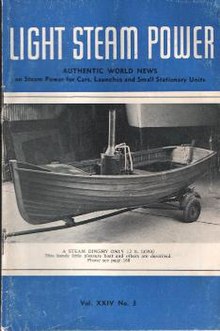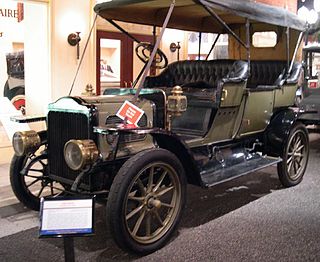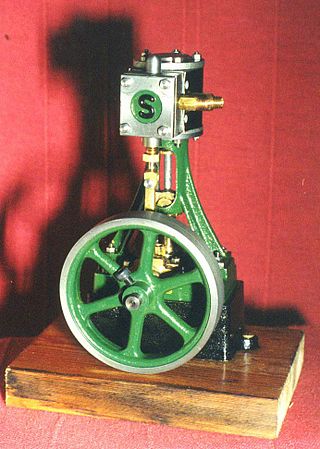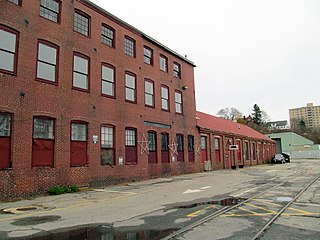
Light Steam Power was a magazine dedicated to amateur and small-scale interest in steam power. Its masthead for some years described itself as, "Authentic World News on Steam Power for Cars, Launches and Small Stationary Units". [1]

Light Steam Power was a magazine dedicated to amateur and small-scale interest in steam power. Its masthead for some years described itself as, "Authentic World News on Steam Power for Cars, Launches and Small Stationary Units". [1]
The magazine was self-published by its editor John Ness Walton of Kirk Michael, Isle of Man. It began when he took over an earlier magazine, Steam Car Developments and Steam Marine Motors in 1945, renaming this in 1949. [2] For most of its existence it was published bi-monthly, although the first and last volumes were published at three- and four-month intervals. [3] In its last years, from 1977 it changed its name to Steam Power and re-located to Loughborough. [2] The magazine continued under this name until 1981.
In more recent years, there was a website maintaining the magazine's archives, but this has now gone. In 2009 an agreement was made with the National Steam Car Association for them to hold the rights to Light Steam Power and other Walton publications. [4] Mr. Walton died March 19, 2013, aged 91.
The two main applications of steam power covered were steam cars and small steam launches. Much of the magazine's content was influenced, if not indeed written, by skilled and enthusiastic amateurs describing their own projects and so their choice of these projects influenced the magazine's own direction. Steam turbines and large steamships were less frequent, being beyond the constructional capacity of most readers, but they were described as news items when particularly interesting events took place. One aspect that oddly was only lightly covered was the use of steam on railways, unusually so as the magazine's heyday coincided with the demise of mainline steam but with increasing interest in the railway and steam preservation movements.
The magazine covered a broad range of topics within 'steam power', often at a far more advanced level than contemporary railway and steam locomotive practice. Low-water-content water-tube boilers were commonplace and even monotube steam generators and uniflow engines were regular features. Although the terms were not yet in use, these technical features coincided with increased recognition of the Advanced Steam Technology and Modern Steam movement.
Coverage was always worldwide and international, even though this was unusual for any magazine at this time, let alone a small independent. Many articles were provided by Australian and Canadian builders.
As well as the magazine content, it also included advertisements for other services from J.N. Walton such as engineering drawings for a range of related machinery, also castings for its construction. Walton also supplied the 'KleenHeet' waste oil burner.
From 1965 a US publication, Steam Calliope: A Voice for the Steam Automobile was published in Panorama City, California by mechanical engineer Thomas P. Hall. It originated news and published clippings for western members of the Steam Automobile Club of America.
The Steam Automobile was the quarterly publication of the Steam Automobile Club of America and was published from 1959 to 1986. Steam Power was the quarterly of the Steam Power Club, a spinoff of the SACA in California. Its last issues were named Ssssteam.
The Steam Automobile Bulletin began in 1986 following a shift of editorial material to a commercial magazine. It continues as a bimonthly with anything technical and historic on steam between toys and locomotives, including steam cars.

A locomotive is a rail transport vehicle that provides the motive power for a train. If a locomotive is capable of carrying a payload, it is usually rather referred to as a multiple unit, motor coach, railcar or power car; the use of these self-propelled vehicles is increasingly common for passenger trains, but rare for freight trains.

The American Locomotive Company was an American manufacturer that operated from 1901 to 1969, initially specializing in the production of locomotives but later diversifying and fabricating at various times diesel generators, automobiles, steel, tanks, munitions, oil-production equipment, as well as heat exchangers for nuclear power plants.

A diesel locomotive is a type of railway locomotive in which the power source is a diesel engine. Several types of diesel locomotives have been developed, differing mainly in the means by which mechanical power is conveyed to the driving wheels. The most common are diesel–electric locomotives and diesel–hydraulic.
Rail transport terms are a form of technical terminology applied to railways. Although many terms are uniform across different nations and companies, they are by no means universal, with differences often originating from parallel development of rail transport systems in different parts of the world, and in the national origins of the engineers and managers who built the inaugural rail infrastructure. An example is the term railroad, used in North America, and railway, generally used in English-speaking countries outside North America and by the International Union of Railways. In English-speaking countries outside the United Kingdom, a mixture of US and UK terms may exist.

A steam car is a car (automobile) propelled by a steam engine. A steam engine is an external combustion engine (ECE), whereas the gasoline and diesel engines that eventually became standard are internal combustion engines (ICE). ECEs have a lower thermal efficiency, but carbon monoxide production is more readily regulated.

Model engineering is the pursuit of constructing proportionally-scaled miniature working representations of full-sized machines. It is a branch of metalworking with a strong emphasis on artisanry, as opposed to mass production. While now mainly a hobby, in the past it also had commercial and industrial purpose. The term 'model engineering' was in use by 1888. In the United States, the term 'home shop machinist' is often used instead, although arguably the scope of this term is broader.

Live steam is steam under pressure, obtained by heating water in a boiler. The steam may be used to operate stationary or moving equipment.

The Railway Magazine is a monthly British railway magazine, aimed at the railway enthusiast market, that has been published in London since July 1897. As of 2010 it was, for three years running, the railway magazine with the largest circulation in the United Kingdom, having a monthly average sale during 2009 of 34,715. It was published by IPC Media until October 2010, with ISSN 0033-8923, and in 2007 won IPC's 'Magazine of the Year' award. Since November 2010, The Railway Magazine has been published by Mortons of Horncastle.

Ian Allan Publishing was an English publisher, established in 1942, which specialised in transport books. It was founded by Ian Allan.

Garden Railways (GR) was a quarterly American magazine about the hobby of running large-scale trains outdoors, also called garden railroading. During its run, it was the world's leading magazine on that subject. Each issue featured hobby news, product reviews, how-to articles, featured railroads from around the world, photo galleries, and much more. Publication ceased after the Fall 2020 issue.
This article contains a list of terms, jargon, and slang used to varying degrees by railfans and railroad employees in the United States and Canada. Although not exhaustive, many of the entries in this list appear from time to time in specialist, rail-related publications. Inclusion of a term in this list does not necessarily imply its universal adoption by all railfans and railroad employees, and there may be significant regional variation in usage.

Decauville was a manufacturing company which was founded by Paul Decauville (1846–1922), a French pioneer in industrial railways. Decauville's major innovation was the use of ready-made sections of light, narrow gauge track fastened to steel sleepers; this track was portable and could be disassembled and transported very easily.

The Doble steam car was an American steam car maker from 1909 to 1931. Its latter models of steam car, with fast-firing boiler and electric start, were considered the pinnacle of steam car development. The term "Doble steam car" comprises any of several makes of steam-powered automobile in the early 20th century, including Doble Detroit, Doble Steam Car, and Doble Automobile, severally called a "Doble" because of their founding by Abner Doble.

The Portland Company was established 10 November 1846 by John A. Poor and Norris Locomotive Works engineer Septimus Norris as a locomotive foundry to build railroad equipment for the adjacent Portland terminus of the Atlantic and St. Lawrence Railroad connection between Portland, Maine, and Montreal. The shops opened for business in October, 1847. Its first locomotive, the Augusta, emerged from the shops in July 1848 for delivery to the Portland, Saco & Portsmouth. Over the next several decades, the company produced in its Fore Street facilities over 600 steam locomotives as well as 160 merchant and naval vessels, railcars, construction equipment, Knox automobiles, and the like. Portland Company built the engines of the civil war side-wheel gunboats Agawam and Pontoosuc. Taking into account its other products, the company could lay claim to being one of the leading medium-to-heavy steel manufacturers in New England. The company ceased production in 1978.

Advanced steam technology reflects an approach to the technical development of the steam engine intended for a wider variety of applications than has recently been the case. Particular attention has been given to endemic problems that led to the demise of steam power in small- to medium-scale commercial applications: excessive pollution, maintenance costs, labour-intensive operation, low power/weight ratio, and low overall thermal efficiency; where steam power has generally now been superseded by the internal combustion engine or by electrical power drawn from an electrical grid. The only steam installations that are in widespread use are the highly efficient thermal power plants used for generating electricity on a large scale. In contrast, the proposed steam engines may be for stationary, road, rail or marine use.

The history of steam road vehicles comprises the development of vehicles powered by a steam engine for use on land and independent of rails, whether for conventional road use, such as the steam car and steam waggon, or for agricultural or heavy haulage work, such as the traction engine.

The 5AT Advanced Technology steam locomotive was a conceptual design conceived by the British engineer David Wardale, and first described in his 1998 definitive work on modern steam, The Red Devil and Other Tales from the Age of Steam.

A mine railway, sometimes pit railway, is a railway constructed to carry materials and workers in and out of a mine. Materials transported typically include ore, coal and overburden. It is little remembered, but the mix of heavy and bulky materials which had to be hauled into and out of mines gave rise to the first several generations of railways, at first made of wooden rails, but eventually adding protective iron, steam locomotion by fixed engines and the earliest commercial steam locomotives, all in and around the works around mines.

A steam motor is a form of steam engine used for light locomotives and light self-propelled motor cars used on railways. The origins of steam motor cars for railways go back to at least the 1850s, if not earlier, as experimental economizations for railways or railroads with marginal budgets. These first examples, at least in North America, appear to have been fitted with light reciprocating engines, and either direct or geared drives, or geared-endless chain drives. Most incorporated a passenger carrying coach attached to the engine and its boiler. Boiler types varied in these earlier examples, with vertical boilers dominant in the first decade and then with very small diameter horizontal boilers. Other examples of steam motor cars incorporated an express-baggage or luggage type car body, with coupling apparatus provided to allow the steam motor car to draw a light passenger coach.
The Steam Automobile Club of America (SACA) is a non-profit organization dedicated to the development, accumulation and dissemination of knowledge about small steam power systems.
{{cite journal}}: CS1 maint: untitled periodical (link)